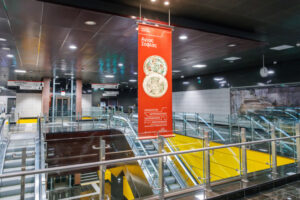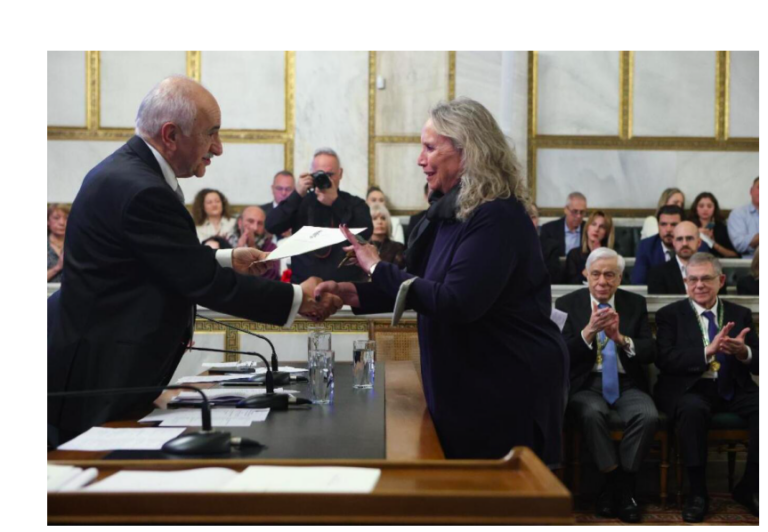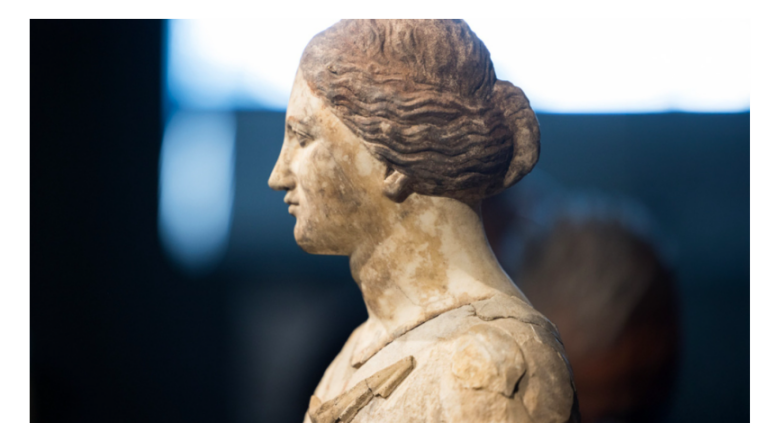After many years of waiting, the operation of the main line of Thessaloniki’s metro is now just a matter of a few hundred hours. In 14 days, on November 30, the city will finally have a metro.
The Athens-Macedonian News Agency (AMNA) boarded one of the 18 ultra-modern trains that will run underground through Thessaloniki, ascended and descended some of the 13 stations’ illuminated escalators, and found that the hectic preparations currently taking place are focused on finishes and the polishing of the infrastructure.
Carlo Bianco: “You are absolutely safe – Enjoy the ultra-modern metro”
“You should feel completely safe,” emphasized Carlo Bianco, CEO of the Thema consortium, addressing the passengers of Thessaloniki’s metro. He stressed that the probability of a failure in the signaling system is one in 100,000 years, and noted that this statement is based on calculations conducted according to European standards EN 50128 and EN 50129, not just his personal assumption.
Bianco explained that the accidents that have occurred in the history of railroads have mostly been due to human errors, addressing those who are still concerned about the fact that the trains of Thessaloniki’s metro have no drivers. “Now, we have removed the drivers and replaced them with a signaling system designed with the highest safety standards. This system substitutes the train driver, and because of its design and operation, the probability of an incident is almost nonexistent,” Bianco added.
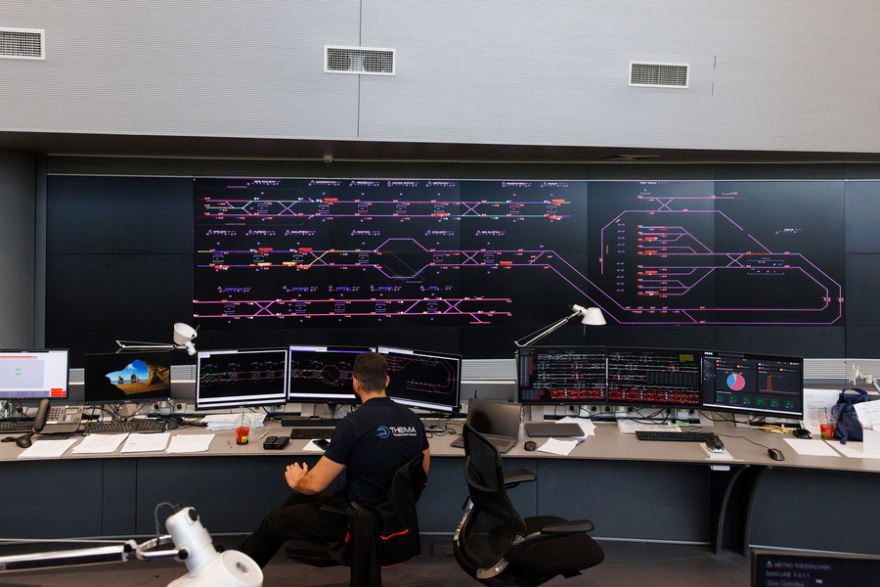
“You are absolutely safe, enjoy your journey on Thessaloniki’s ultra-modern metro,” he said, reinforcing his point by citing the successful operation of driverless lines in Milan and Copenhagen for the past 40 years, with no security incidents recorded.
The Thema consortium, which includes ATM, the operator of the Milan metro (which has been in operation for 60 years), and the Copenhagen metro, will manage and maintain Thessaloniki’s metro for 11 years.
“What we promised… is happening”: The main metro line operational on November 30
“What we promised… is happening, and the main line of Thessaloniki’s metro will be handed over for use to the citizens and visitors of the city on November 30,” said Nikos Koureta, CEO of Greek Metro S.A.
He mentioned that in 14 days, the metro will become part of Thessaloniki’s daily life, with citizens able to board and experience a different way of commuting to and from the city center. Koureta reminded that the main line is 9.8 km long, with 13 stations: New Railway Station, Democracy, Venizelou, Agia Sofia, Sindrivani, University, Papafi, Euclid, Fleming, Anavli, 25th of March, Voulgari, New Switzerland, and the Depot (50,000 sq.m), which includes the Operations Control Center, a repair base, and office spaces.
Regarding the control center in Pylaia, Koureta described it as the “heart” of the ultra-modern metro system, where experts and scientists will monitor all metro systems, infrastructure, and trains 24/7. “This is one of the most modern control centers globally, and there is a backup system in place for any contingencies,” he said.
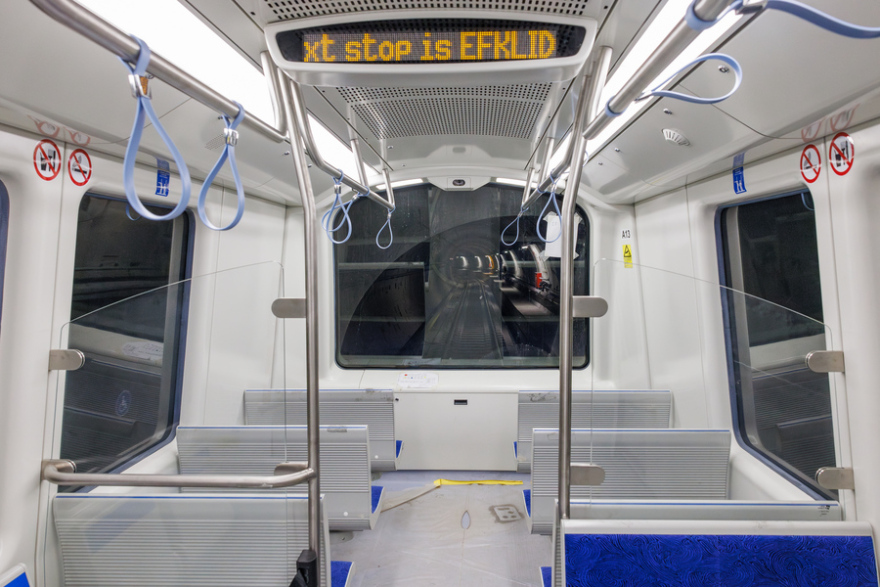
17-minute journey from New Railway Station to New Switzerland
The underground journey on one of Thessaloniki’s metro trains, from one end of the city to the other—from Nea Elvetia to the New Railway Station—takes “17 minutes including stops,” clarified Koureta. This translates to an average speed of 40 km/h and a maximum speed of 80 km/h, meaning that passengers will need only 40 seconds to travel between two stations.
The expected daily ridership for the Thessaloniki metro will be 254,000 passengers, with a capacity of 18,000 passengers per hour per direction. Koureta noted that with the extension to Kalamaria, an additional 78,000 to 80,000 passengers will use the metro daily.
The time gap between the 18 trains on the main line will initially be 3.5 minutes, but this will decrease to 1.5 minutes as the additional 15 new trains for the Kalamaria extension are integrated. Each train can carry 465 passengers (seated and standing), and all trains are 92% constructed from recyclable materials.
The introduction of the metro is expected to reduce private car traffic in Thessaloniki by approximately 57,000 vehicles daily, leading to a decrease in CO2 emissions by 212 tons per day.
The metro ticket price is €0.60, and passengers can purchase tickets from the 104 vending machines at the stations or from the ticket offices, where they can also obtain personalized cards. Special categories, such as people with mobility issues, can travel for free.
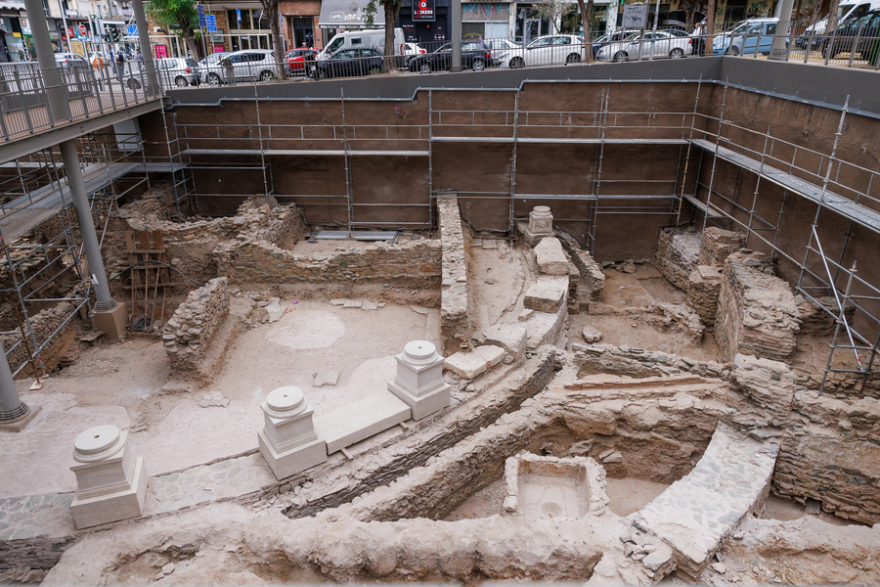
Thessaloniki Metro: Bike and pet-friendly
The Thessaloniki metro is also “bike-friendly” and “pet-friendly,” as per a ministerial decision published in the government gazette. Passengers with bicycles can board the trains, with two bicycles allowed per train car, and pet owners can bring their pets on board in appropriate bags.
Nea Elvetia station and Kalamaria extension
The Nea Elvetia station is under intense construction, and several teams are working hard to complete the opening of Michail Pselou street and the new transfer station by November 30. The extension to Kalamaria will be operational by October or November 2025, with five stations and 15 new trains.
The daily “shower” for the trains and innovations
At the end of their shifts, before going to sleep at the Pylaia Depot, the ultra-modern trains of the Thessaloniki metro will undergo a “shower.” “All trains will go through a washing station equipped with brushes, then be cleaned inside by specialized teams and parked,” said Nikolaos Denes, the deputy director of Thessaloniki Metro.
Regarding the metro’s four innovations, Denes highlighted that it has no drivers, safety doors on both sides of the platform, separate single-track tunnels, and a third line that isolates the current.
When compared to Athens’ metro, Denes explained that Thessaloniki’s metro has two smaller tunnels with a single track, preventing two trains from running side by side, and platforms are always in the center.
On safety, Denes emphasized that there are no blind spots either inside the trains or at the stations; everything is monitored by the control center, and each train is equipped with sand dispensers to improve traction when starting or stopping.
Finally, Denes mentioned that the University station is the deepest, at 37-40 meters, with three entrances/exits, and at the Agia Sofia station, the levels reflect the historical construction layers of Thessaloniki.
Ask me anything
Explore related questions
